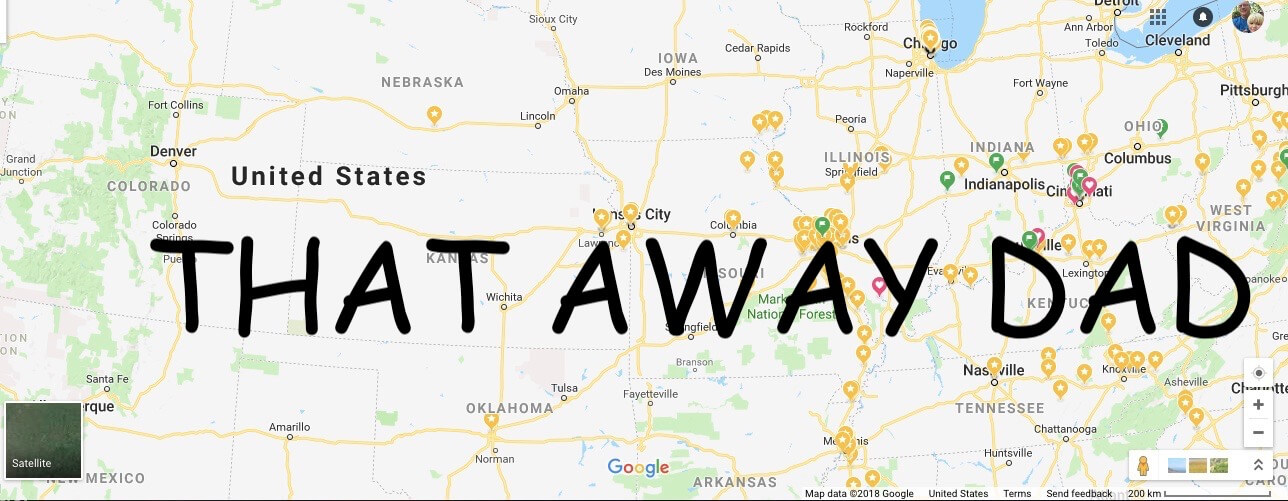Two mighty rivers, the Mississippi and Missouri, come together at the Edward “Ted” and Pat Jones- Confluence Point State Park.
The park is located east of West Alton, Mo., in St. Charles County, Mo. You can see this point after a short .6-mile out and back hike with only 20 feet of elevation gain. The trail surface is a mix of paved and unpaved sections due to past flooding.
Going to the Edward “Ted” and Pat Jones – Confluence State Park
The drive involves driving 4.5 miles of the gravel section of Riverlands Way. Check the website before you head out to make sure that it is section is not flooded, which can happen quite often.

Arriving at the Parking Lot
Near the start of the trail is a covered information area. Boards talk about the history of the people around the confluence, explorers Meriwether Lewis and William Clark, how the confluence has changed, and the park itself. Restrooms are nearby.

Starting the Trail
You head up across a levee along a cement walkway. This ends abruptly. Recent floods destroyed the sidewalk along here. The gravel trail starts to the left heading through woods.

Along the Walk
The Missouri River begins to appear along the right. It moves rapidly. My son, who is with me on the walk, stood up along a pile of dirt looking out over the river.

Further down I came across a mulberry tree. A favorite berry for birds, ducks, and geese.

Near the Confluence
Then we came to a cement bench and in the middle was information about the Missouri River.

Nearby is a long pole, written about halfway to the top is a notation for the 1993 Record Flood 438.2 feet, which was the top of the pole. My son stood under it to show how high the water was compared to him.

Next, we came to another bench facing out over the Mississippi River where you can learn about this waterway.

In the middle is information about Lewis and Clark seeing the confluence.

At the Point
We walked out to the rocks near the point where the rivers meet. The Missouri River runs faster and muddier and the Mississippi River runs slower and clearer. The photos don’t do this justice, but you can see this with your own eyes.

From this vantage point, I could see the 180-foot Confluence Tower along the Mississippi towards the east.

Then the lookout at the Columbia Bottom Conservation Area along the Missouri River to the west.

In the far distance, you can see the start of the Chain of Rocks Canal looking southward.

Fishing boats were heading out today. They had to rev their engines up to get up to speed to head down the Missouri River.

My son enjoyed throwing sticks in the water and watching as they rushed to the confluence.

Going Back
As we turned around, I saw rocks and mud piled up on the Missouri side. This was all the material they had to clear out to unearth the signs here.

I saw a debarked tree and I wasn’t sure if it was a beaver or the river that did it.
Driving Out
Along the gravel road heading back, we see a muddy pond with white egrets, lots of wildlife in here.

Final Thoughts
This was a short hike with a big pay-off seeing these huge rivers come together. I also liked how there were a lot of information boards to help you learn about the rivers and people who have come through here.
HISTORY OF THE CONFLUENCE

Louis Joliet
French explorer Louis Joliet and a Jesuit missionary, Father Jacques Marquette, descended the Mississippi in 1673 and are credited with the discovery of the confluence.
Some of the Illinois tribes that early explorers encountered here were Peoria, Kaskaskia, Cahokia, and Michigamea, which left their names to the Midwest landscape.

Lewis and Clark
IN 1804 Lewis and Clark began their epic journey through these waters. However, these rivers have changed course since then. The confluence point is now two miles downstream from the point where the Corps of Discovery entered the Missouri River.
How Park Came to Be
The full name of the state park is Edward “Ted” and Pat Jones-Confluence Point State Park. The Jones have supported Missouri State Parks including the Katy Trail State Park. This park is now 1,118 acres.
DETAILS
Drive: Take Interstate 270 to exit 31 and go north on Missouri Highway 367 which becomes U.S. Highway 67. Make a right onto Riverlands Way. Then stay on Riverlands Way making a right onto the gravel section which can close due to flooding.
Hours: 8 a.m. to 6 p.m. with park closures during times of flooding. Check with the website before going.
Address:
1000 Riverlands Way, West Alton, MO 63386
MORE NEARBY TRAILS

Riverlands Migratory Bird Sanctuary
See a wide variety of birds as you walk along trails in Mississippi River bottomland at Riverlands Migratory Bird Sanctuary.

DadHikes: Fort Bellefontaine
Looking at the Missouri River from Fort Belle Fontaine County Park.
Grounds of a former 19th century U.S. Military installation and ruins of a popular summer retreat in the 1930s can be explored at Fort Belle Fontaine County Park in North St. Louis County.

Columbia Bottom Conservation Area: Confluence Hike
Finding my way to viewing the confluence of the Missouri and Mississippi Rivers was my goal at Columbia Bottom Conservation Area.


